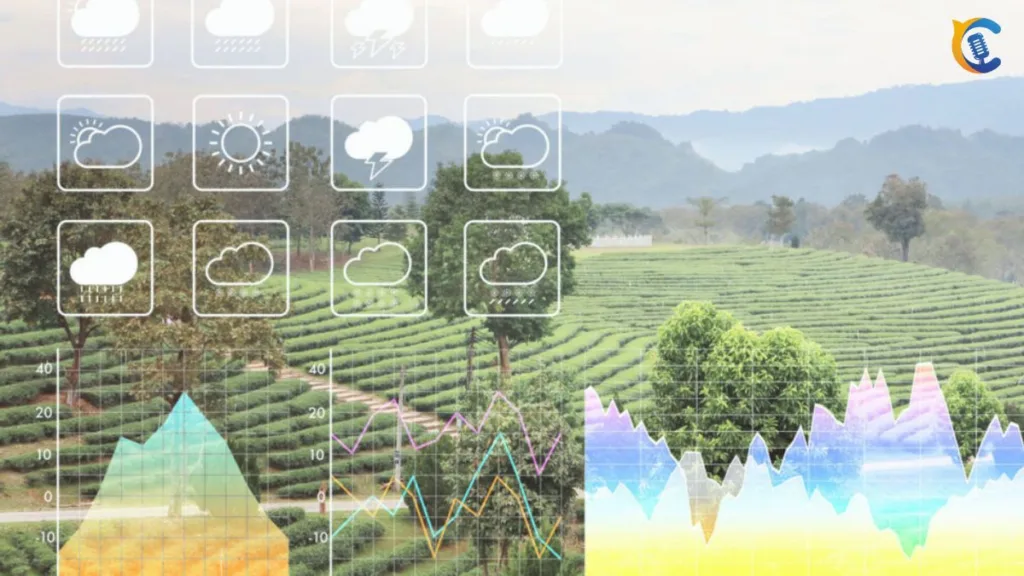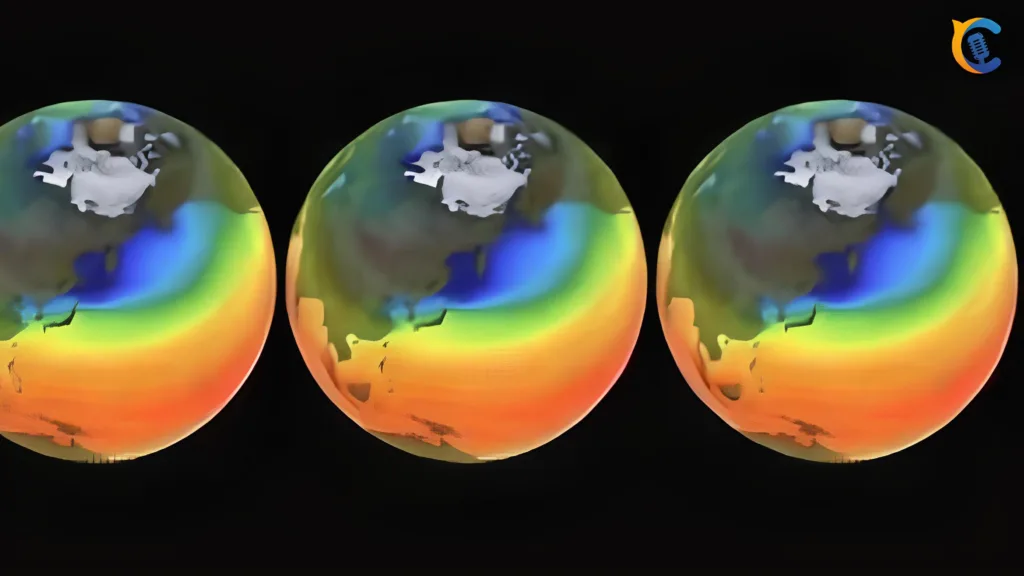AI in Climate Modelling for Solutions in 2023
Table of Contents
Introduction

The Earth’s climate is constantly evolving, and its impact on our environment is becoming increasingly evident. To address this global challenge, researchers and scientists are turning to advanced technologies such as Artificial Intelligence (AI) to gain deeper insights into climate patterns, predict extreme weather events, and develop sustainable solutions. In this blog, we will explore the significant role AI plays in climate modelling and how it has revolutionised data analysis, allowing scientists to better understand climate change and work towards sustainable solutions.
Understanding Climate Modelling

Climate modelling involves using mathematical and computational techniques to simulate the behaviour of the Earth’s climate system. These models consider various factors, such as atmospheric conditions, ocean currents, ice cover, greenhouse gas concentrations, and more, to project future climate change. However, climate modelling is a complex task, requiring the analysis of vast datasets spanning decades or even centuries to identify meaningful patterns and trends.
The Role of AI in Climate Modeling

AI has emerged as a game-changer in climate modeling due to the following reasons:
- Data Analysis and Pattern Recognition: AI possesses the ability to quickly and accurately analyze vast amounts of data. Climate scientists work with terabytes of information from satellites, weather stations, and other sources. AI algorithms, like machine learning, can efficiently process these datasets to identify patterns, correlations, and anomalies that might be overlooked by human analysts. This capability significantly enhances our understanding of climate patterns and their underlying drivers.
- Predictive Capabilities: AI-powered climate models have demonstrated higher accuracy in predicting future climate scenarios. Machine learning algorithms can learn from historical climate data and identify trends that may lead to specific outcomes. This predictive capability is crucial in anticipating extreme weather events, such as hurricanes, floods, and heatwaves, allowing communities to prepare and respond effectively.
- Climate Scenario Simulations: AI enables scientists to run numerous simulations in a relatively short time, exploring various climate scenarios based on different factors like greenhouse gas emissions, land-use changes, and energy consumption patterns. These simulations assist in developing more comprehensive and informed climate policies and strategies.
- Efficient Resource Allocation: Climate research often requires substantial computational resources. AI can optimize these resources by intelligently allocating computing power to areas where it can have the most significant impact. This efficiency ensures that research is conducted more effectively and sustainably.
- Enhanced Understanding of Feedback Loops: Climate change involves intricate feedback loops where changes in one component of the climate system can influence other components. AI can help identify and analyze these feedback loops, allowing scientists to better comprehend the complex interactions within the climate system.
Sustainable Solutions and Climate Change Mitigation

Insights derived from AI-driven climate modeling have profound implications for developing sustainable solutions to combat climate change:
- Renewable Energy Integration: AI can optimize the integration of renewable energy sources, such as solar and wind power, into existing energy grids. By predicting energy demands and supply patterns, AI helps ensure a smoother transition towards renewable energy, reducing reliance on fossil fuels and lowering greenhouse gas emissions.
- Climate-Resilient Infrastructure: AI-derived climate projections assist in designing climate-resilient infrastructure. Engineers and planners can use this data to construct buildings, roads, and other structures that can withstand the challenges posed by changing climate patterns.
- Precision Agriculture: AI-powered climate models can aid farmers in making informed decisions about crop selection, planting times, and irrigation schedules based on expected weather conditions. This precision agriculture approach can optimize resource usage, increase yields, and reduce environmental impacts.
- Ecosystem Conservation: AI can analyze data on ecological systems and biodiversity to predict how climate change might impact various species and habitats. This information is invaluable for conservation efforts and helps protect vulnerable ecosystems from the threats posed by climate change.
Challenges and Ethical Considerations

While AI brings numerous advantages to climate modeling, there are also challenges and ethical considerations that must be addressed:
- Data Quality and Bias: AI algorithms heavily depend on the quality and diversity of data. Climate datasets may have inherent biases due to variations in data collection methods and historical records. Addressing these biases is crucial to ensure that AI-driven climate models provide accurate and unbiased predictions.
- Transparency and Explainability: AI models, especially deep learning algorithms, are often considered “black boxes” because their decision-making processes are not readily interpretable. In climate modeling, it is essential to strike a balance between using complex AI models and maintaining transparency to ensure that the results are understandable and trustworthy.
- Computing Power and Energy Consumption: AI’s efficiency in climate modeling relies on significant computing power, which can contribute to increased energy consumption and associated carbon emissions. Striking a balance between computing needs and environmental impact is essential to promote sustainable AI practices.
- Data Privacy: Climate data often contains sensitive information, such as location-specific weather observations. Maintaining data privacy and implementing robust security measures to protect this information from unauthorized access is crucial.
Collaboration for a Sustainable Future

To maximize the potential of AI in climate modeling and drive meaningful change, collaboration between scientists, policymakers, technology experts, and the public is vital. Some key actions that can foster collaboration and progress include:
- Open Data Sharing: Encouraging open access to climate data fosters transparency, collaboration, and innovation. Governments, organizations, and research institutions should promote the sharing of climate-related datasets to accelerate advancements in AI-driven climate modeling.
- Interdisciplinary Partnerships: Collaboration between climate scientists, AI researchers, and policy experts can lead to comprehensive and effective climate solutions. By combining expertise from different fields, we can develop robust strategies to mitigate climate change’s impact.
- Public Awareness and Engagement: Educating the public about the role of AI in climate modeling and its potential impact on addressing climate change is crucial. Engaging communities and raising awareness can inspire collective action towards sustainable practices.
- Policy and Regulation: Policymakers must recognize the significance of AI in climate modeling and implement regulations that promote responsible AI practices. Encouraging the use of AI for sustainable solutions and mitigating potential risks will be essential in shaping a climate-resilient future.
AI and Climate Modeling key facts
- AI’s Vital Role: AI is revolutionizing climate modeling by processing immense data volumes to unravel climate patterns and anticipate extreme weather events.
- Climate Analysis Advancements: AI empowers scientists to provide profound climate insights through efficient data analysis and modeling techniques.
- Predicting Extreme Weather: AI’s predictive capabilities aid in foreseeing and preparing for extreme weather events and bolstering climate resilience.
- Sustainable Solutions: AI-driven climate modeling fosters the development of sustainable strategies to combat environmental challenges.
- Data-Driven Climate Understanding: AI assists in comprehending complex climate dynamics by processing diverse datasets.
- Precision and Accuracy: AI’s computational prowess enhances the precision and accuracy of climate models, yielding more reliable predictions.
- Real-time monitoring: AI-driven systems enable real-time climate monitoring, facilitating swift responses to evolving weather patterns.
- Climate Policy Support: AI-generated insights provide valuable support for shaping effective climate policies and mitigating climate change impacts.
- Collaborative AI Efforts: AI fosters collaboration among researchers and experts worldwide, fostering a global approach to climate modeling.
- AI’s Environmental Impact: Leveraging AI for climate modeling aligns with sustainability goals, demonstrating technology’s positive impact on the environment.
Conclusion
AI’s integration into climate modeling represents a revolutionary step forward in our fight against climate change. By harnessing the power of AI, scientists can gain deeper insights into climate patterns, predict extreme weather events, and develop sustainable solutions for a resilient future. However, to fully realize the potential of AI in climate modeling, we must address challenges related to data quality, transparency, ethical considerations, and environmental impact.
Collaboration between researchers, policymakers, and the public is critical to drive meaningful change and ensure that AI is leveraged responsibly for climate solutions. With continued dedication, innovation, and collective efforts, AI and climate modeling can help pave the way towards a sustainable and climate-resilient future for generations to come. Let us unite in our quest to safeguard our planet and create a more sustainable world through the transformative power of AI and climate modeling.
- Arsenal team formation 2023: A Comprehensive Overview 2023
- Greece’s Epic Fight Against Devastating Wildfires
- NASA Shares First Images of US Pollution
- AIRCRAFT CRASHES IN AUSTRALIA’S NORTHERN TERRITORY DURING US MILITARY TRAINING EXERCISE
- Further Insights into the Top 20 US Cities with Highest Internet Usage


































